When you think of love, what color springs to mind?
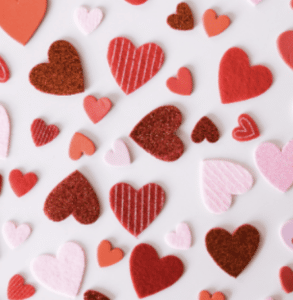
AGEING IN AMERICA
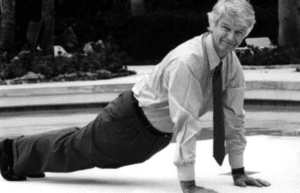
“When we talk about old age. each of us is talking about his or her own future. We must ask ourselves it we are willing to settle for mere survival when so much more is possible.”
Robert Butler. 1975
THE PERSONALITY OF RED
The most physical color in the spectrum, red suggests the very ebb and flow of life. It is the most viscerally alive hue, the symbolic color of the heart, strong-willed and expressing strong emotions. It commands us to stop but at the same time encourages movement. Psychologically, red is a call to the adrenaline glands to get the body and senses activated. From the beginning of time, red has been deeply ingrained in the human mind as a signal to act or re-act, to fight or to flee. It is the color of life-sustaining blood or life-threatening bloodshed as well as the color of enticing, appetite arousing ripened fruits and delicious foods that sustain humans’ very existence.

THE COLOR OF LOVE
From the lightest pink to a bold red, we associate red with love. Red is demanding, and if that’s what you want, red is your color! The most sensual of all colors. The brightest reds make the boldest statements. Whether expressing danger, celebration, love or passion — lipstick reds, scarlet and crimson will not be ignored. These are the reds that “get the blood up” and arouse the strongest emotions.
Bright pinks capture some of the same essence of the red that spawns them. Some of the pinks are called bright and shocking because that is exactly what they are meant to be. Intensely theatrical, they radiate with high energy exerting a youthful and sensual force. When red seems a bit cliche’ or is in need of a more playful or youthful attitude, hot pinks, magentas and fuchsias serve as excellent stand-ins.
RED AND HER OFF SPRINGS
DEEP REDS
Rich, elegant, refined, tasty, expensive, mature, sumptuous, cultivated, luxurious, robust.
BRICK RED
Earthy, warm, strong, sturdy, established, country.
BRIGHT RED
Exciting, energizing, sexy, passionate, hot, dynamic, stimulating, provocative, dramatic, powerful, courageous, magnetic, assertive, impulsive, adventurous, demanding, stirring, spontaneous, motivating. NEGATIVE: Overly aggressive, violent, danger.
BRIGHT PINK
Exciting, theatrical, playful, hot, attention-getting, high-energy, sensual, wild, tropical, festive, vibrant, stimulating, flirtatious. NEGATIVE: Gaudy
LIGHT PINK
Romantic, affectionate, compassionate, soft, sweet tasting, sweet smelling, tender, delicate, innocent, fragile, youthful. NEGATIVE: Too sweet.
Leatrice Eiseman, Guide to Communicating with Color, former Executive Director of The Pantone Institute
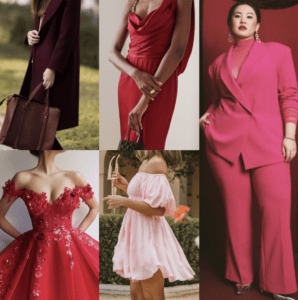
YOUR RED HUE
No matter your age, body shape, hair color, height, weight, skin color or style, you have a shade of red that is ideal for YOU. Red is your romantic color and can be worn when you want to be emotionally persuasive, passionate or celebrate!
Just look at these lovely women in their shades of red – hints of orange, coral, rose each highlighting the beauty of that particular woman. And these women are experts on red! They are Seasonal Color Consultants in the Suzanne Caygill system. We gathered our reds to highlight how each woman’s red is so different, yet perfect for her.
From left: Joan Kosmachuk, Carla Mathis, Jennifer Robin, Denise Lampron, Pati Springmeyer, Cecilia Stoeckicht, Olga Kamova, Lisa Gaines, Joy Imboden Overstreet, Bernie Burson, Beverly Cole, Erin Mathis, and Ann Campbell.
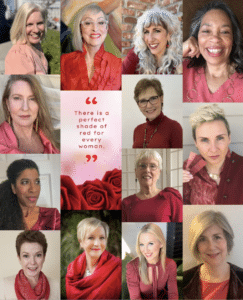
The color of love is the shade of red
that loves you back when you wear it.
AGEISM, ANOTHER FORM OF BIGOTRY.
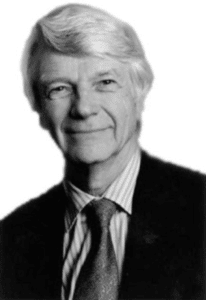
Pioneering gerontologist Robert N. Butler, outlined the state of human aging in his Pulitzer-prize winning book, Why Survive? Being Old in America.
Robert Butler was the founding director of the National Institute on Aging who staked his career on the premise that older people not only deserve better, but also are an invaluable resource society can’t afford to waste.
In landmark research conducted at the NIH, he and colleagues debunked the myth of the inevitability of senility as a function of aging, hoping to liberate an ever growing segment of the population from the stigmas associated with age.
In 1968, Butler coined the term “ageism” during an interview with the then-fledgling Washington Post reporter Carl Bernstein. Reflecting on community resistance to a program to establish housing for older people of moderate income in Chevy Chase, a posh neighborhood bordering the District of Columbia, “I was struck,” Butler said, “by the parallel to sexism and racism in terms of negative attitudes toward age. ‘You know, it’s really an outrage,’ I told Carl. ‘It’s like racism, it’s ageism!’”
His outrage and the term he coined to describe it made it to a page one story in the Post. He subsequently wrote a paper, “Ageism, Another Form of Bigotry.” The term stuck and has since found its way into the dictionary.
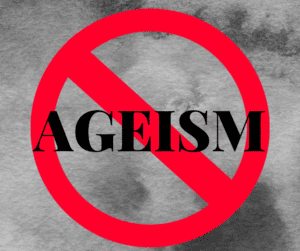 “In America,” he wrote, “childhood is romanticized, youth is idolized, middle age does the work, wields the power and pays the bills, and old age, its days empty of purpose, gets little or nothing of what it has already done. The old are in the way.”
“In America,” he wrote, “childhood is romanticized, youth is idolized, middle age does the work, wields the power and pays the bills, and old age, its days empty of purpose, gets little or nothing of what it has already done. The old are in the way.”
This article is adapted from a profile by Peter Wortsman that appeared in the Fall 2005 issue of P&S Journal, now Columbia Medicine magazine.
With three over-50 friends in search of employment, I’ve heard their stories which appear to revolve around ageism. “Are you SURE you can do the work? “Will this be too much for you? “We work at a fast pace here, can you keep up? “Can you manage technology?”
Maybe these are valid HR questions. And when I discussed the interviews with my friends, each one said they felt singled out because of their age. Note: All three of these individuals are in top physical shape, have out performed colleagues in previous jobs and are more qualified than most. They each said how demeaned and hopeless they felt sitting across the table from a fresh-faced HR Specialist who had no idea about value, wisdom, historical knowledge, mentorship, or experience or that their corporation could benefit from a “Wisdom Officer.”
The entertainment field has always favored the young set. That’s why women like Reese Witherspoon, Sally Field, Bette Midler and others have their own production companies so they can continue storytelling on their terms. My lesser known actor friends are turning to making their own films — one that garnered Best Director and Best Actor!
Did I ever mention the time I tried on an outfit in an upscale boutique? The sales lady said, “save that for the younger ladies.” What the heck did that mean? I was too embarrassed to ask. I left the store feeling severely judged and unattractive. That was about 10 years ago. Today, I would have addressed it — “I like this. It fits my body shape, personality and I’m going to wear it.” That’s huge for me as a recovering people pleaser. I’m curious, how would you have responded?
As I age, I keep adding to my toolkit more self-worth, value, acceptance and self-love. We can’t expect society to change its attitude toward aging. We need to change our attitude on aging and leave ageism without roots to grow.
Happy Valentine’s Day!
Nevermind it’s pagan origin, we have turned Valentine’s Day into a 24-hour opportunity to express our affection through candy, flowers and card sharing. Wear YOUR color of love and celebrate!
To Midlife and Beyond in Fullness and Beauty,
Denise
